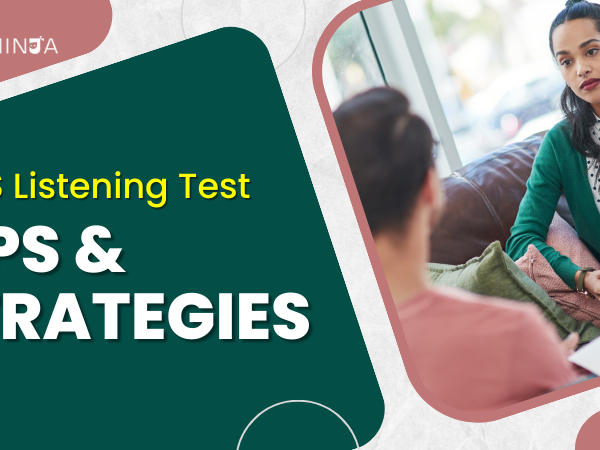The Graduate Record Examinations or GRE is a standard test that is needed for admission to many graduate institutions in the United States and Canada. This exam is owned and administered by Educational Testing Service.
In the GRE comprehension section the question type consists of Text Completion, Sentence Equivalence, and Reading Comprehension.
The GRE Examination tests you on three broad skills, namely:
Verbal reasoning
Quantitative reasoning
Analytical writing
When should You Take the GRE Examination?
If you intend to apply to graduate or business schools throughout the world, you should take the GRE exam. This is part of the admissions process for numerous courses, including master’s, MBA, J.D., and doctorate degrees.
When deciding on your candidacy, admission and fellowship panels will consider your GRE score in conjunction with your other achievements, such as undergraduate records and reference letters.
GRE Test Pattern
The GRE exam pattern experienced a significant modification in August 2011. The overall score for the General Test was reduced from 1600 to 340.
The GRE General test evaluates test takers on the following criteria:
#Ability to reason verbally
#Ability to reason quantitatively
#Analytical writing abilities
What Is the GRE Subject Specific Test and GRE General Test?
| The GRE General Test is meant for verbal and quantitative reasoning, critical thinking, and analytical abilities. | The GRE General Test is meant for verbal and quantitative reasoning, critical thinking, and analytical abilities. |
| Majorly taken by MS or PhD students | Majorly taken by MS or PhD students |
| Cost of this test is 205$ | Cost of this test is 150$ |
Structure of The Verbal Reasoning Part
#There are two parts of 20 questions each.
#Each part has a time limit of 30 minutes.
#The following sorts of questions are addressed in each section:
4 for sentence equivalence
Text completion – 6 points
Reading Comprehension – 10 points
Score range: 130 to 170, with a one-point increment.
Also Read: Is Your Child at School Today? All about IELTS GT Reading Answers
Structure of the Quantitative Reasoning Part
#There are two parts of 20 questions each.
#Each section has a time limit of 35 minutes.
#The following sorts of questions are addressed in each section:
8 Quantitative comparisons
9 things for problem-solving
Questions about Data Interpretation – 3
#Score range: 130 to 170, with a one-point increment.
Structure of the Analytical Reasoning Part
#You must write two essays for this section:
#Analyze a debate.
#Each essay has a time limit of 30 minutes.
#Scores range from 0 to 6, with a 0.5 point increment.
Quick Facts about the GRE Exam
#The GRE is a three-and-a-half-hour exam.
#Each part is separated by a one-minute pause.
#After the third segment, there is a 10-minute break.
#Your GRE score will be valid for a period of five years.
#The GRE score can be used to apply to business schools (some universities).
#It is available in 160 countries.
#In most parts of the world, including India, computer-delivered tests are available on all working days.
#In October-November and February, paper-delivered tests are offered.
GRE Verbal Section: Question-type Breakdown
Are you a student who wants to prepare for the GRE examination this year? When you start your preparation, you will come to know that understanding the GRE comprehension section is very important. The type of questions varies from being a simple vocabulary question to one that is a long passage! In this article, we have provided GRE comprehension section breakdown to provide you with an overview of what to expect.
| Question Type | Across both the sections | Within one section |
| Reading the comprehension | The questions that could be asked range from,
1 Long passage: 4 questions 5-6 Short passages: 1-2 questions each 2-3 Medium passages: 2-3 questions each 3-4 Critical Reasoning questions (short paragraphs) |
5-7 passages of varying length can be expected. |
| Sentence equivalence | 9 questions are asked | 4-5 questions can be expected. |
| Text completions | The questions that can be asked are,
2-4 single-blank TCs 4-6 double-blank TCs 2-4 triple-blank TCs |
The questions that can be asked are,
1-2 single-blank TCs 2-3 double-blank TCs 1-2 triple-blank TCs |
Also Read: Best Online IELTS Preparation Course: How You Can Prepare for IELTS at Home using Online Resources
Comprehension Question Type Breakdown
This is the second sort of question you’ll see on the comprehension section question type breakdown. There will be 5-7 passages and 10-13 questions. Topics will range from the social sciences to biological and physical sciences, as well as arts and humanities and other mundane issues. With enough experience, you’ll be able to ignore the topic and concentrate on the passage’s construction—critical reading is essential.
You may expect to see the following items here:
#What is the main idea of the text as a whole? What is the author’s goal in writing it?
#In these questions, you see what may be rationally deduced based on the facts in the passage. You are not permitted to bring in any outside information or hypothetical circumstances!
#Based on the context of the surrounding content, you must determine less-common meanings of widely used vocabulary terms.
#You must locate the precise language in the passage that supports the prompt’s specific claim.
Verbal Section Explained
On the test day, you will find that there are several varieties of passage types. In this list the
| Type of passage asked | Number of passages | Questions asked per passage |
| Short | 5-6 | 1-2 |
| Medium | 2-3 | 2-3 |
| Long | 1 | 4 |
| Critical reasoning type | 3-4 | 1 |
What to Expect in Critical Reasoning Type?
You are given a short paragraph having only one question. These questions typically test your logical thinking abilities. There are few subsets in this pattern. The question type breakdown can be like this,
#Five-Choice Question Formats: This may require you to explore the passage for relevant information, derive the primary concept, topic, or goal of the work, explain a word in the context of your reading, or extend the meaning of the passage.
#Three-Choice Question Formats: may ask you to draw conclusions from a given passage or draw conclusions from the passage or concepts in the given passage.
#Select a sentence format: may ask you to locate any supporting pieces of evidence or statement to explain a concept in the paragraph.
#Bolded sentence format: focusses on the content. Typically asked to evaluate the relationship between the words in bold with ones not in bold.
Also Read: MBA in Australia for Indian Students: How to Apply for an MBA in Australia?
Reading Comprehension Strategies
The comprehension section has been explained below,
#The reading for the shorter paragraph argument questions is pretty simple: simply read the paragraph from beginning to end, paying great attention to every word, and be prepared to perform a detailed reread once you look at the question.
#Approaches to reading lengthier sections must be more cautious and deliberate.
#Skimming is a reading method employed here to rapidly identify the key ideas and concepts of a text while time is limited, especially if the subject matter is unknown to you. Skimming is a type of rapid reading in which phrases and paragraphs are scanned (looked at swiftly but not completely).
#Take notes on the following points while you read the passage: major concepts (used in responding to main idea questions), important points, and information.
#As you read, try to summarise the section and keep track of the specifics. These strategies are especially effective if you have a tendency to lose attention when reading.
Question Types
#Questions about main ideas are precisely what they sound like. You will be asked to identify the passage’s core concept, dominating topic, or major goal.
#The most prevalent form of GRE question is an inference question. This question type, as you might guess, challenges test-takers to form conclusions based on what they’ve read. What you might not realise is how stringent the standards for determining the right conclusion are.
#Questions requiring you to highlight a sentence in the passage are known as Highlight the Sentence questions. The most essential questions, of course, are why you’ve been asked to highlight a sentence and how to identify the proper text.
Changes to the Verbal Section
The Verbal component of the GRE has undergone significant modifications. The Revised GRE question type breakdown now has two verbal portions of 20 questions each, each lasting 30 minutes. In this article, the GRE verbal section breakdown has been explained.
#The redesigned GRE does not include any synonyms or analogies.
#A new type of question has been added: Equivalence of Sentences
A sentence equivalence question has the following elements: 1 sentence 1 void There are six options to select from. You must select two answers.
#Text Completion is a new question type that has been added. The sentence completion question type on the new GRE has undergone several subtle changes and is now known as Text Completion.
#The revised GRE places a greater focus on the reading comprehension question type. Nearly ten of the 20 questions in each verbal segment are about reading comprehension.
Also Read: Cheapest Countries to Study Abroad for Indian Students: Top Colleges, Fees, IELTS Score & More
Conclusion
We hope that we have resolved your queries about the GRE Verbal Section breakdown. You can take the GRE General Test once every 21 days for a total of five times in a rolling 12-month period. There is no maximum limit. If you are a student who aspires to get admission to a prestigious University abroad next year, we advise you to start your GRE preparations right away.
Since practice makes a man perfect, we also recommend you to practice as many tests as possible so that you can work on your weaknesses. The ongoing global pandemic situation has left many students unsure about their dreams. We are here to assist you and guide you to achieve these dreams. Our wide range of expertise and study material could be easily accessed from the comfort of your home. Follow our blogs, where we have the GRE verbal section explained. Success is just a click away!










